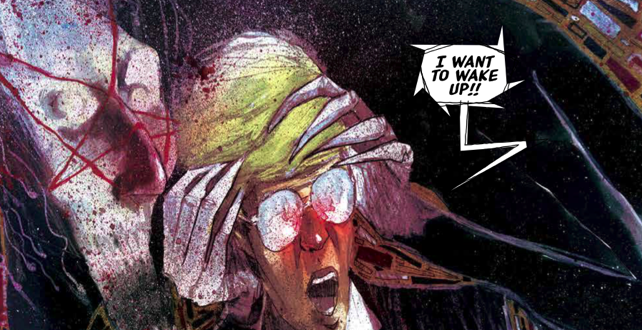The Department of Truth #2 // Review
It’s only real if you believe it is. And only what you believe is real. It’s a simple philosophy, Metaphysics. That sort of thing. The only thing is: Cole has found out that it’s true on a very real and visceral level now that he’s working for a secret government agency. It’s going to be a strange journey for him...a journey which becomes very personal in the second issue of The Department of Truth. Writer James Tynion IV explores a world of conspiracy, belief, and government influence in another issue that’s beautifully rendered in dark shades of horror by artist Martin Simmonds.
Cole had been a victim when he was a child. Precisely what he was a victim of has come into question now that he’s working for the Department of Truth. Senior agent Ruby offers to take him out for pancakes when he gets into work on his first real day on the job. She asks him if he has any questions. He doesn’t. He knows the basic premise. He wants to know something, though. He wants to know about a demonic man with a star on his face that was eating children in front of him. To find out more about it, he’s going to find out more about his new employer.
Tynion draws Cole into the story a bit further and elegantly drags the reader right along with the protagonist. The dialogue is crisp...starting in a simple diner somewhere in DC and then submerging into shadowy offices occupied by shadowy people exploring shadowy things. The background of a world where truth is created by mass belief is given a bit more weight and texture in deeply engrossing conversations that are applied to the page in a way that keeps the story fresh. A story that weighs itself as heavily in dialogue as Tynion’s really has no business working in a comic book format, but it does thanks to a clever eye for scripting on Tynion’s part and some dreamily dark art by Martin Simmonds.
Simmonds’ rendering of the story keeps everything stylishly horrifying. Cole’s memory of the star-faced man has a pleasantly creepy nightmare quality about it. The visual manifestation of the demonic man and his actions are given just enough detail to deliver the horror without overpowering the page with details that would distract from it. The more earthbound scenes which fill the bulk of the issue are brought to the page in panels that amplify the drama in layouts that play with pacing and framing. A story like this could have been a lot of dead dialogue, but once again Simmonds brings it to the page with dark, dazzling magic.
The first issue in the series established the premise. The second issue delves into Cole’s personal history with the Satanic Panic of the 1980s. The formatting of the series hasn’t fully begun to assert itself yet, but it might be cool if each issue featured a different










